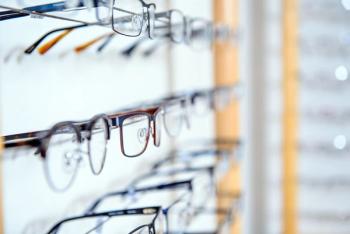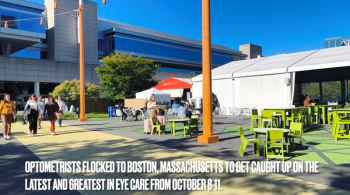
Get the right fit for irregular corneas
Patients with irregular corneas due to conditions such as keratoconus, pellucid marginal degeneration, or refractive surgery will always challenge the eye-care practitioner (ECP) to create just the right contact lens (CL) design.
Key Points
Patients with irregular corneas due to conditions such as keratoconus, pellucid marginal degeneration, or refractive surgery will always challenge the eye-care practitioner (ECP) to create just the right contact lens (CL) design. Two essential steps in getting the proper fit in these patients include centering the lens well and avoiding lens tilt, according to James W. Slightom, ABOM, FCLSA.
High-Dk RGP lenses are becoming a more popular choice because of the health advantages of greater oxygen delivery to the eye, said Slightom, who is a CL consultant at ABB CONCISE Inc., headquartered in Coral Springs, FL. They do, however, require more attentive care from lens wearers. These lenses are more likely to warp or become scratched, develop deposits easier, and wear out sooner due to their high silicone content.
"If it tilts too much, it may induce astigmatism or aberrations. If the tilt is not corrected, you'll end up with a high amount of corneal cylinder," Slightom noted. "Many times, correcting the fit will solve the problem, and it won't be necessary to add a toric front surface to get rid of the extra cylinder."
"No matter what the corneal shape, if we can get the lens on the eye not tilted, we can correct it because there is a tear layer behind there that has virtually the same refractive ability as the plastic," he added.
A lens designed with reverse geometry-with a flat central base curve, a significantly steeper second curve, and a flat posterior peripheral curve zone-can help with centration and tilt by locking the lens in position centrally and vaulting the damaged central cornea.
Optimizing individual choices
While corneal implants are one of the accepted methods of treating keratoconus, most patients will eventually wear gas permeable CLs, said Slightom. Fitting them, therefore, will be more difficult.
In lieu of using these implants in complex cases, he chooses a +4 to +6 lens (Air Optix Night and Day Aqua lens, Ciba Vision) because these are stiff and centrally thick, with good oxygen permeability. He then puts a gas permeable lens on top of it.
"I'm doing more and more piggybacking because it's a very forgiving situation. I'd rather do that than go to a scleral lens because the patient can handle the soft and gas permeable lenses together," he said. "But when you do that, you must be very careful to instruct the practitioner not to have the patient use a gas permeable solution on the rigid lens before they insert it. Use a saline-based solution because it will absorb into the soft lens and be there for the day."
Slightom's tips on fitting lenses in eyes with pellucid marginal degeneration, which have an inferiorly steep cornea, are to keep the optic zone small because of irregularities and to consider a lens built with quadrant-specific curves.
Additional pointers
For post-LASIK or post-radial keratotomy corrections, Slightom suggests a large diameter lens and reverse geometry, and will typically build a lens 4 to 6 D steeper in the second curve than in the base curve.
The optic zone should be similar to the treatment area (about 6.0 to 7.0 mm), even in a 10-mm lens, while the reverse curve should be about 1 mm wide and 5 to 6 D steeper than the base curve.
"As long as you've got tear exchange and movement, you're OK," he said.
Because these are challenging cases, patients fitted with lenses for irregular corneas require frequent follow-up. When first fitting lenses on an irregular cornea, Slightom recommends follow-up visits 1 to 2 weeks later, then at 2 and 6 months. After several years, follow-up visits will not be needed as often as long as the fit remains trouble-free; an annual visit should be sufficient.
Slightom also shared a few tips from his career in CL fitting. Practitioners can use their cell phone camera to check the fit. Hold the phone up to the slit lamp, look at the image on the monitor, and take a video. As a plus, the video can be downloaded to the patient's electronic health record.
Slightom also recommends that ECPs e-mail their topography measurements and fluorescein videos to the fitting consultant. Doing so provides the consultant with more extensive and accurate information for lens fitting than keratometry readings, and will result in a lens that will most likely fit better and have a reduced possibility of numerous refits.
FYI
James W. Slightom, ABOM, FCLSAE-mail:
Slightom is a contact lens consultant at ABB CONCISE.
Newsletter
Want more insights like this? Subscribe to Optometry Times and get clinical pearls and practice tips delivered straight to your inbox.



















































.png)


